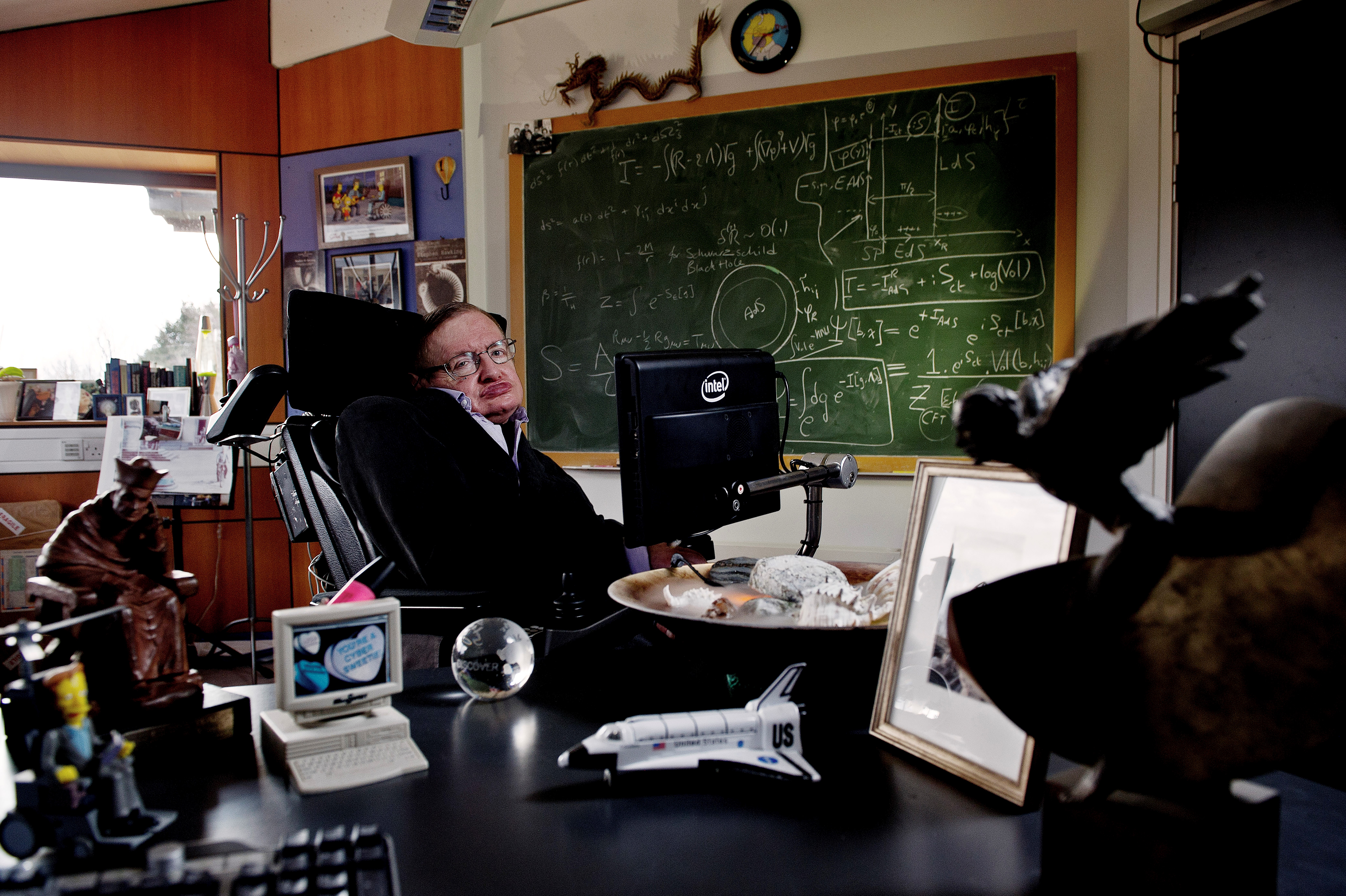A treasure trove of archive papers and personal objects belonging to the late Professor Stephen Hawking – from personalised wheelchairs and scientific bets signed with Hawking’s thumbprint to his seminal papers on theoretical physics and his scripts from The Simpsons – have been acquired by the Science Museum Group and Cambridge University Library.
Following an Acceptance in Lieu agreement, Hawking’s vast archive of scientific and personal papers will remain in Cambridge at the University Library, while the entire contents of Hawking’s office will be preserved as part of the Science Museum Group Collection.
Today (26 May 2021) the Minister for Digital and Culture Caroline Dinenage MP, joined Science Museum Group Director Sir Ian Blatchford, Cambridge University Librarian Jessica Gardner, Lucy and Tim Hawking, and Edward Harley, Chairman of Acceptance in Lieu (AIL) Panel, Arts Council England, at the Science Museum to mark the acquisition.

The entire contents of Hawking’s office – hundreds of individual items from the mundane to the extraordinary – will be preserved by the Science Museum Group, enabling the public to explore key aspects of Hawking’s life and career as a world-class theoretical physicist, popular communicator of science and as an individual who lived with motor neurone disease for more than five decades.
Selected highlights from Hawking’s office will go on public view for the first time in a new display at the Science Museum in early 2022. Later next year, global audiences will be able to explore hundreds of remarkable items from Hawking’s working life when this significant acquisition is catalogued, photographed and published to the Science Museum Group’s popular online collection.

The acquisition of Hawking’s office provides a rare opportunity to preserve an important space of science and technology.
While rooms of decorative or artistic interest are often kept for posterity, spaces of science are rarely saved. Hawking’s office, which also represents a unique opportunity to capture the abstract discipline of theoretical physics in material form, joins a very small group of preserved spaces of scientific importance, such as James Watt’s workshop at the Science Museum.
Hawking had a lifelong relationship with the Science Museum, which celebrated his 70th birthday through a popular special exhibit. Hawking had regularly visited the museum since childhood, received a Fellowship for his contributions to science and fondly described the museum as one of his favourite places.

While theoretical physics is filled with abstract ideas, the contents of Hawking’s office demonstrate how social science can be. It was a hive of activity, where Hawking’s colleagues and collaborators could thrash out ideas on blackboards, with a ready supply of tea and coffee.
Alongside the blackboards and coffee-making items which will join the Science Museum Group Collection, this extraordinary acquisition includes Hawking’s own reference library.
The library features examples of Hawking’s important work, from one of five copies of Hawking’s PhD thesis, Properties of an Expanding Universe, to Singularities and the Geometry of Space-Time, which began an important period of collaboration with Roger Penrose, Black Hole Explosions, which predicted Hawking Radiation, alongside books that influenced Hawking, personal copies of his students’ work and several editions of A Brief History of Time, Hawking’s 1988 bestseller which brought him international acclaim.

Initially given a two-year prognosis when diagnosed, Hawking lived with motor neurone disease for more than five decades.
From the late 1960s he used a wheelchair and from 1986 Hawking used a voice synthesiser after an emergency tracheotomy meant he could no longer speak. Six of Hawking’s personalised wheelchairs and his innovative communication systems have been acquired, illustrating how these technologies evolved and the adaptations made for Hawking’s changing requirements.
The wheelchair below is the Permobil F3 model, the last Hawking used. Jon Wood, Hawking’s graduate assistant, notes that this was far more than just a wheelchair – it was also his voice, communication, ventilation support and mobile office.
Hawking was a familiar figure driving his chair around the streets of Cambridge. He also covered pretty much all of the Science Museum’s galleries during a 2012 visit to see his 70th birthday exhibition.

Hawking’s playful communication with his peers can be seen through several bets he made with his friends Kip Thorne and John Preskill on the outcome of scientific debates. Three of these were made at Caltech in Pasadena, where Hawking was a regular visitor. The bets show Hawking’s playful side – and that he was careful to hedge his bets, sometimes betting against his own scientific theories.
They’re also a good illustration of theoretical physics more generally – there’s plenty of debate, and lots of people think that being wrong is just as good as being right, because it spurs you on to new theories.

Hawking’s office was filled with memorabilia and mementos, including the coxing blazer he wore as an undergraduate (and refused to have washed after being thrown into the river wearing it) and a personalised Simpson’s letterman jacket. Hawking’s international celebrity is visible through the photographs with heads of state and mementoes from appearances on The Simpsons and Star Trek which decorated the office.
Hawking also received many awards and medals which have also been acquired for the nation. These include the prestigious Franklin medal (previously awarded to Edison and Einstein), the Companion of The Order of The British Empire, the Papal Medal and the Planetary Society’s Cosmos Award.
